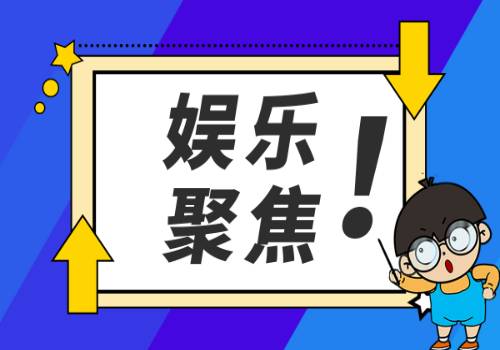小學(xué)六年級(jí)英語(yǔ)上冊(cè)教案
小學(xué)六年級(jí)英語(yǔ)上冊(cè)教案(精選11篇)
 【資料圖】
【資料圖】
作為一位杰出的教職工,常常要寫一份優(yōu)秀的教案,借助教案可以恰當(dāng)?shù)剡x擇和運(yùn)用教學(xué)方法,調(diào)動(dòng)學(xué)生學(xué)習(xí)的積極性。如何把教案做到重點(diǎn)突出呢?以下是小編整理的小學(xué)六年級(jí)英語(yǔ)上冊(cè)教案,歡迎閱讀與收藏。
小學(xué)六年級(jí)英語(yǔ)上冊(cè)教案 篇1
教學(xué)目標(biāo):
1、能比較流暢地朗讀A部分對(duì)話,并進(jìn)一步表演對(duì)話。
2、能熟練運(yùn)用本單元的重點(diǎn)句型
Whens your birthday? My birthdays on…
What would you like as a birthday present?
Id like…根據(jù)實(shí)際情況進(jìn)行問(wèn)答。
3、通過(guò)完成D部分練習(xí),使學(xué)生掌握聽(tīng)力填空的答題技巧。
教學(xué)重點(diǎn):
能熟練運(yùn)用本單元的重點(diǎn)句型
Whens your birthday? My birthdays on…
What would you like as a birthday present?
Id like…根據(jù)實(shí)際情況進(jìn)行問(wèn)答。
教學(xué)準(zhǔn)備:
日歷、錄音機(jī)及磁帶、句型小黑板、
板書設(shè)計(jì):
Unit 3 Bens birthday
A: Whens your birthday?
B: My birthdays on…
A: What would you like as a birthday present?
B:Id like…
教學(xué)過(guò)程:
A、 Free talk
1、Greetings
2、Look and say(看日歷說(shuō)日期)
3、Free talk
T: What day is it today?
T: What date is it today?
T: Whens your birthday?
T: What would you like as a birthday present?
T: Would you like a …?
T: Whens the Teachers Day?/Whens the Childrens Day? S: Its Monday.
S: Its the…
S: Its on the…
S: Id like a …
S: Yes, I do./ No, I dont.
S: Its on the tenth of September./Its on the first of June.
B、 Read and act
1、 Books opened at P22. Read the text after the tape.
2、 Then read in chorus. Try to recite the text.
3、 Act the dialogue.
C、 Ask and answer
1、T:Whens your birthday?
T: What would you like as a birthday present?
Open the books at P25、 Ask and answer in pairs.
2、 Do a survey
全班進(jìn)行匯總反饋
A: s birthday is on … He would like……
D、 Listen and write
1、Books opened at P26、Look at the picture , please.
T: Bens birthdays coming、 He is talking to his family about his birthday party、 What would he like as his birthday present? Lets listen carefully、
2、T: What would he like as his birthday present?
T: What else would he like?
T: What color?
T: What does Ron want?
3、Listen to the tape again and fill in the blankets.
4、Check up the answers.
5、Read the sentences in chorus.
S: He would like a big cake with a lots of strawberries.
S: He would like some fish.
S: A blue one and a yellow one.
S: He wants a blue fish, too.
E、Assign homework
1、 Ask and answer(P25)
2、通過(guò)詢問(wèn)制作全班同學(xué)生日表。
3、預(yù)習(xí)Part E。
小學(xué)六年級(jí)英語(yǔ)上冊(cè)教案 篇2
一、教學(xué)目標(biāo)
知識(shí)目標(biāo)
1、能聽(tīng)懂、會(huì)說(shuō)、會(huì)讀和會(huì)拼: blackboard bookcase music computer sometimes near songbook
2、能聽(tīng)懂、會(huì)說(shuō)、會(huì)讀: our classroom watch TV lots of
3、能聽(tīng)懂、會(huì)說(shuō)、會(huì)讀和會(huì)寫句型: There is/are...in/on/near...
能力目標(biāo)
1、能用There be句型介紹某一場(chǎng)所。
2、提高學(xué)生的閱讀能力。
情感目標(biāo)
讓學(xué)生了解貧困地區(qū)的教室等,珍惜我們所擁有的生活。
二、教學(xué)重難點(diǎn)
1、能聽(tīng)懂、會(huì)說(shuō)、會(huì)讀和會(huì)拼: blackboard bookcase music computer sometimes near songbook
2、能聽(tīng)懂、會(huì)說(shuō)、會(huì)讀: our classroom watch TV lots of
3、能聽(tīng)懂、會(huì)說(shuō)、會(huì)讀和會(huì)寫句型: There is/are in/on/near
4、能用自己的話介紹某一場(chǎng)所。
三、教學(xué)方法
直觀情景
四、教學(xué)工具
PPT
五、教學(xué)過(guò)程
Step1 Warm-up
1、Greetings
2、Free talk
T:Whats your job? T: Whats my job?
T:Do you want to know more about me?(引出bright)
Step 2 Presentation
1、 T:Whats in my study?
以書房圖為中心,講授生詞near,lots of, sometimes, songbook.
2、 總結(jié)There be
3、Have a rest引出句型Whats in the classroom
Step 3 Practice
Whats in the classroom?
There is/are
Step 4 Presentation
1、Watch a cartoon and answer questions
2、跟錄音讀課文
Step5 Practice Read in roles
Step 6 Consolidation
1、To be a guide
2、show some pictures
Step 7 Homework
1、 Read the passage fluently.
2、 Introduce your bedroom to your classmates.
第二課時(shí)
Teaching Aims(教學(xué)目標(biāo))
學(xué)生可以掌握單詞及字母:boy,girl,egg,fan,Ee,Ff
學(xué)生可理解使用句型:Are you Kitty? Yes,I am./No,I am not.
Teaching Importances(教學(xué)重點(diǎn))
boy,girl,egg,fan,Ee,Ff
Teaching Difficulties(教學(xué)難點(diǎn))
Are you Kitty? Yes,I am./No,I am not.
Cultivation Education Training Points(養(yǎng)成教育訓(xùn)練點(diǎn)):
繼續(xù)培養(yǎng)學(xué)生對(duì)英語(yǔ)的學(xué)習(xí)興趣,幫助學(xué)生逐步養(yǎng)成善于觀察、勇于表現(xiàn)的好習(xí)慣,引導(dǎo)學(xué)生發(fā)現(xiàn)身邊的英語(yǔ)。
Teaching Methods(教學(xué)方法)
游戲法,小組競(jìng)賽法,情境法
Teaching Tools(教學(xué)用具)
多媒體課件
Teaching Procedures(教學(xué)過(guò)程)
Pre—task preparations
1、播放音樂(lè),帶領(lǐng)學(xué)生朗讀兒歌,感受Are you …?句型。
Are you a boy?
Are you a boy?
Yes,I am
Yes、I am
Are you a girl?
Are you a girl?
No,Im not
No,Im not
2、請(qǐng)個(gè)別學(xué)生用課時(shí)一學(xué)過(guò)的句子介紹自己。
S1:Hi,Im…(name)、Im a… (boy/girl)
While-task procedures
1、出示Listen and say的圖片,播放錄音或多媒體動(dòng)畫,讓學(xué)生跟讀對(duì)話。板書句型Are you …? Yes,I am、/No,Im not、讓學(xué)生跟讀,然后通過(guò)提問(wèn)幫助學(xué)生理解該句型的用法。
T: Are you…?
S1:Yes,I am、/No,Im not、
2、再次播放Listen and say的錄音,讓學(xué)生跟讀。然后請(qǐng)一個(gè)學(xué)生上來(lái)戴上眼罩,再請(qǐng)另外三個(gè)學(xué)生和教師一起參與游戲,在游戲中不斷重復(fù)問(wèn)Are you…?
S1:Are you…?
S2:Yes,I am./No,Im not.
S1:Are you…?
S3:Yes、I am、/No、Im not.
3、Listen and guess:猜謎游戲。通過(guò)游戲幫助學(xué)生操練句型Are you…?先讓學(xué)生看Play a game欄目的對(duì)話,然后請(qǐng)一個(gè)學(xué)生蒙上眼罩,站在講臺(tái)上,另一個(gè)學(xué)生與他/她打招呼,蒙眼罩的學(xué)生根據(jù)聲音猜猜是誰(shuí)在打招呼。
S1:Hello! Im a girl/boy.
S2:Are you…?
S1:No、
S2:Are you…?
S1:Yes,I am、/No、Im…
4、出示Kitty, Alice,Joe,Peter的圖片,每次請(qǐng)一位學(xué)生上來(lái)選擇一張人物圖片并扮演人物作自我介紹,請(qǐng)其他學(xué)生猜猜他/她是誰(shuí)。
Sl:(pick the card of Kitty)Im a girl、
Ss:Are you Alice?
S1:No、Im Kitty.
Post-task activities
1、學(xué)生四人一組分角色朗讀Listen and say的對(duì)話。鼓勵(lì)學(xué)生仿照Listen and say的內(nèi)容玩捉迷藏游戲,邀請(qǐng)一組學(xué)生上來(lái)玩游戲。
S1,S2&S3:One,two,three! Come and catch me、
S1:Im a…
S4:Are you…?
S1:Yes,I am、/No、Im…
S2:Im a…
S4:Are you…?
S2:Yes。I am./No、Im…
S4:You re…
S3:Yes、Im…
2、把學(xué)生分為四人一組,發(fā)給每個(gè)小組四張人物圖片,請(qǐng)每個(gè)組員挑選一張,然后根據(jù)圖片扮演角色。要求學(xué)生用Are you…?句型互相詢問(wèn)對(duì)方的身份。
S1:(to S2)Are you Mr…?
S2:Yes,I am./No,Im not.Im…
Blackboard Design(板書設(shè)計(jì)):
Unit3 Are you Kitty?
Are you…?
Yes,I am./No,Im not.
小學(xué)六年級(jí)英語(yǔ)上冊(cè)教案 篇3
教學(xué)內(nèi)容:
DAsk and answer E Read and match F Draw and guess G Listen and repeat H Sing a song
教學(xué)要求:
1、掌握單詞、詞組take a walk , suddenly , something , note , nearby , quickly , pick up , come up , keeper , point , fine
2、聽(tīng)懂、會(huì)說(shuō)、會(huì)讀句型Can I…?No , you cant、
3、了解字母組合er在單詞中的讀音
4、會(huì)唱歌曲The signs in the park
重點(diǎn)難點(diǎn):
1、掌握四會(huì)單詞、詞組、句型
2、了解字母組合er在單詞中的讀音
教具準(zhǔn)備:
錄音機(jī),磁帶,單詞,詞組卡片,教學(xué)掛圖
教學(xué)過(guò)程:
一、Revision
利用時(shí)鐘T :Whats the time ? S :Its…
二、Presentation:
1、D Ask and answer
T : Jack is back home from the zoo、 What does he want to do ?
Look at the pictures、 Then ask and answer the questions in pairs、
Picture 1 A :Can I go to the park ?
B :No , you cant 、 You should go home now 、
Picture 2 A : Can I have an ice-cream ?
B :No, you cant 、 You should have dinner now、
Picture 3 A :Can I watch TV ?
B :No ,you cant 、 You should read your books now 、
Picture 4 A :Can I play computer games ?
B :No , you cant 、 you should go to bed now 、 Then say together
2、Read and match
T :Ben is reading a story 、 Look at the pictures and help Ben write the correct letters in the boxes 、
Listen to the tape , answer the questions 、
[1] What is Mr Smith doing in the park ?
[2] what does he see on the grass ?
[3]And what does he do ?
[4]Who comes up to Mr Smith and what does he say ?
[5]How much does the park keeper fine Mr Smith ?
邊回答,邊教授單詞、詞組take a walk , suddenly , something , not , nearby , quickly , pick up , come up , keeper , point , fine
集體朗讀單詞
集體讀短文,個(gè)別表演課文
三、Read and match
部分單詞、詞組較多,要多創(chuàng)設(shè)情景,便于學(xué)生掌握,尤其是詞組:pick it up使用需強(qiáng)調(diào),以及區(qū)分ten-yuan note與ten yuan 3
四、Draw and guess
Today is Sunday .
Ben Nancy and Jack are playing a game about public signs.
讓學(xué)生看懂P20游戲要求,請(qǐng)學(xué)生自己畫公共標(biāo)志
T :what does this sign mean ?
Yes , youre right . Sorry , youre worry. Try again.
五、Listen and repeat
1、跟讀單詞
2、How to pronounced “er”here ?
3、Any other words “er”pronounced.
4、Read the sentence
5、比較er發(fā)音為// 5
六、Sing a song
1、Read the song
2、Explain some words or phrases.
3、Listen to the tape and sing together.
七、Practice:《練習(xí)冊(cè)》
A Listen and choose
八、Homework
1、Copy the new words
2、Recite Part E,G
板書設(shè)計(jì):
Unit 2 Public signs
Jack :Can I…? Mum :No , you cant.
You should…now.
/ / brother peter sister tiger
Peters brother and sister like the toy tiger
小學(xué)六年級(jí)英語(yǔ)上冊(cè)教案 篇4
教學(xué)內(nèi)容:
unit 3 part a look, read and say
教學(xué)目標(biāo):
1、學(xué)生能聽(tīng)說(shuō)讀單詞exciting
2、學(xué)生能聽(tīng)說(shuō)讀寫單詞excited, sports、
3、學(xué)生能了解一般過(guò)去時(shí)的意義和基本用法:it was there just now、 they were here a moment ago、
4、學(xué)生通過(guò)本課的學(xué)習(xí),知道要照看好自己的物品。
重點(diǎn)難點(diǎn):
一般過(guò)去時(shí)態(tài)的理解和運(yùn)用
教學(xué)準(zhǔn)備:
1、多媒體課件
2、錄音機(jī)
教學(xué)過(guò)程:
一、free talk
t: hello, boys and girls、 its a fine day today, isnt?
s: yes、
t: what date is it today?
s: its …
t: whens your birthday?
s: my birthdays on the …of …
t: my birthdays on the … of … so yesterday was my birthday、 i got many presents and i was very excited、 understand?
s: yes、
t: and i watched a sports meeting on tv with my friends、 its olympic games、 when was the beijing olympic game?(課件展示奧運(yùn)會(huì)圖片和口號(hào))
s: it was on the 8th of august、
二、presentation
1、sports
t: do you like olympic games?
s: yes, i do、
t: so i think you like sports、
(課件展示運(yùn)動(dòng)的單詞和圖片,以舊帶新讀出新單詞)
t:look, the children are having a sports meeting、 lets say a chant、
the students look at the pictures and say the chant together:
swimming, swimming, theyre swimming、
skating, skating, theyre skating、
skiing, skiing, theyre skiing、
running, running, theyre running、
2、race
t: look, the men are running, they are having a running race、
(課件展示圖片,學(xué)生根據(jù)已學(xué)單詞自己讀出新單詞race)
t: look at the pictures and tell me what race is it?
(課件出示游泳比賽、賽馬和賽車的圖片,讓學(xué)生說(shuō)一說(shuō))
3、exciting
t: which race do you like watching?
s: i like watching … races.
t: why?
s: because its …
t: its very exciting、(課件出示圖片和單詞)
操練新單詞,朗讀、組詞和造句
4、excited
t: when you watch the exciting games, how do you feel?
s: i feel very happy.
t: me, too、 i will feel very excited.
(課件出示圖片和單詞,操練新單詞,朗讀、組詞和造句)
鞏固新內(nèi)容
課件展示一段學(xué)生進(jìn)行跑步比賽的視頻和提示,學(xué)生以小組討論的形式談?wù)撛撘曨l。
5、was were以及一般過(guò)去時(shí)的意義。
根據(jù)學(xué)生對(duì)視頻的描述,教師將課件上的be動(dòng)詞一個(gè)個(gè)改為was, were并示范朗讀,同時(shí)出現(xiàn)一般過(guò)去時(shí)的意義并讓學(xué)生歸納be動(dòng)詞的變化規(guī)律。
6、just now, a moment ago
t;如何判斷一個(gè)句子是否為過(guò)去時(shí)呢?在一般過(guò)去時(shí)的句子中常會(huì)出現(xiàn)表示過(guò)去時(shí)間的時(shí)間狀語(yǔ),如just now, a moment ago、
(朗讀單詞和詞組,用其中的新單詞moment ago組詞造句)
三、鞏固操練
1、將下列句子改成一般過(guò)去時(shí)
2、看一看,比一比,說(shuō)一說(shuō)
四、consolidation
listen to the tape carefully and answer the questions.
五、practice in groups
use the things in the gift boxes and make dialogues.
小學(xué)六年級(jí)英語(yǔ)上冊(cè)教案 篇5
教材分析
本課是外研版小學(xué)英語(yǔ)六年級(jí)上冊(cè)第七模塊第一單元的內(nèi)容,主要學(xué)習(xí)單詞believe, lucky, bamboo, CD-ROM, copy, fantastic,學(xué)習(xí)并運(yùn)用詢問(wèn)他人喜好并表達(dá)個(gè)人喜好的句子。本單元是本模塊的重點(diǎn)內(nèi)容,掌握了本單元所學(xué)內(nèi)容,可以為本模塊第二單元的學(xué)習(xí)打下基礎(chǔ)。同時(shí)詢問(wèn)以及表達(dá)人物喜好的句型與生活聯(lián)系密切,學(xué)習(xí)掌握后可以真正地運(yùn)用到實(shí)際生活中。
學(xué)情分析
六年級(jí)學(xué)生已經(jīng)有三年多的英語(yǔ)學(xué)習(xí)經(jīng)歷,他們既掌握了一定的詞匯量,與此同時(shí),他們還對(duì)保持著小學(xué)生對(duì)新鮮事物的興趣與好奇心的心理。
由于在村小,六年級(jí)學(xué)生在用英語(yǔ)進(jìn)行口語(yǔ)表達(dá)以及小組合作對(duì)話方面的經(jīng)歷會(huì)比較少,這類練習(xí)對(duì)他們來(lái)說(shuō)會(huì)相對(duì)難一點(diǎn)。所以在教學(xué)過(guò)程中,我會(huì)重點(diǎn)培養(yǎng)學(xué)生的說(shuō)話能力,在句型操練部分我會(huì)多給時(shí)間學(xué)生去練習(xí)和掌握。
教學(xué)目標(biāo)
知識(shí)目標(biāo)
1.學(xué)習(xí)單詞believe, lucky, bamboo, CD-ROM, copy, fantastic。
2.學(xué)習(xí)并運(yùn)用詢問(wèn)他人喜好并表達(dá)個(gè)人喜好的句子:
(1) Do you like…?—— Yes ,I do、/ No, I don’t、
(2) sb、 like / likes sth、
sb、 don’t / doesn’t like sth、
能力目標(biāo)
1.在日常生活中初步學(xué)會(huì)運(yùn)用句型,如何詢問(wèn)同學(xué)、朋友或者家庭成員的喜好,學(xué)會(huì)表達(dá)自己的喜好。
2.通過(guò)學(xué)習(xí)培養(yǎng)學(xué)生聽(tīng)、說(shuō)、寫和靈活運(yùn)用語(yǔ)言的能力,培養(yǎng)學(xué)生參與合作的意識(shí)。
情感目標(biāo)
1、 本單元以介紹蛇和熊貓的習(xí)性為背景,可以讓學(xué)生加深對(duì)蛇和熊貓的了解,也有利于激發(fā)學(xué)生學(xué)習(xí)英語(yǔ)的興趣。
2、 通過(guò)學(xué)習(xí)詢問(wèn)喜好的英語(yǔ)表達(dá),可以促進(jìn)師生,生生,以及學(xué)生與朋友、家人的溝通,增進(jìn)彼此的了解,改善人際關(guān)系。
教學(xué)重點(diǎn)和難點(diǎn)
通過(guò)學(xué)習(xí),使學(xué)生能夠正確讀出單詞believe, lucky, bamboo, CD-ROM, copy, fantastic,能在實(shí)際生活中運(yùn)用句型:
(1) Do you like…?—— Yes ,I do、/ No, I don’t、
(2) sb、 like / likes sth、 sb、 don’t / doesn’t like sth、
小學(xué)六年級(jí)英語(yǔ)上冊(cè)教案 篇6
教材分析
本課是科學(xué)普及出版社《小學(xué)英語(yǔ)》六年級(jí)上冊(cè)第三課 Where do you live ? 第一課時(shí)。本課本書十二課的第三課,前面兩課教的是第三人稱單數(shù)在疑問(wèn)句中的變化規(guī)則。而本課在學(xué)習(xí)了新句型時(shí),也以第三人稱為主線進(jìn)行句子的變化,如Where does she live ?
學(xué)情分析
學(xué)生分析主要包括學(xué)生已有的認(rèn)知經(jīng)驗(yàn)、學(xué)習(xí)興趣、生活經(jīng)驗(yàn)等。 這課是圍繞你來(lái)自哪里?你居住在哪里來(lái)展開問(wèn)話的。這些句子比較容易,也符合學(xué)生心理,學(xué)生學(xué)起來(lái)比較容易和有興趣,對(duì)于學(xué)生來(lái)說(shuō)難度不大。就是國(guó)家的一些單詞學(xué)生可能不太認(rèn)識(shí),得進(jìn)行重點(diǎn)教。這里有一點(diǎn)就是學(xué)生都是來(lái)自中國(guó),這個(gè)句型操練性不強(qiáng),住在哪有一定的變動(dòng)性。因此為了讓學(xué)生多操練,得用多媒體,讓學(xué)生和電腦上的人進(jìn)行問(wèn)話,了解不同國(guó)家的人,這樣也有利于教其它國(guó)家的單詞。
教學(xué)目標(biāo)
1、能夠在對(duì)話的過(guò)程中,感知、理解、學(xué)習(xí)交際用語(yǔ)和詞匯:
交際用語(yǔ):Where do you come from ? I come from China.
Where do you live ? I live in Beijing.
詞匯: Paris France London England Moscow Russia Hong Kong China
2、學(xué)生能夠利用這種對(duì)話進(jìn)行簡(jiǎn)單的交流。能知道一些朋友是來(lái)自哪個(gè)國(guó)家和居住在什么地方。
3、學(xué)生在知道了一些國(guó)家之后,還能學(xué)到一些國(guó)家的特殊標(biāo)志性的建筑,知道一些國(guó)家的人情風(fēng)俗,增加學(xué)生的知識(shí)面。
教學(xué)重點(diǎn)和難點(diǎn)
一、交際用語(yǔ)的應(yīng)用:Where do you come from ? I come from China.
Where do you live ? I live in Beijing.
二、詞匯的聽(tīng)說(shuō)讀寫: Paris France London England Moscow Russia Hong Kong China
教學(xué)過(guò)程
1、復(fù)習(xí)
(1)讓學(xué)生唱一首歌
教師跟唱,學(xué)生全體唱,目的是為了讓學(xué)生輕松的進(jìn)入學(xué)習(xí)的氣氛中。
(2)復(fù)習(xí)第三人稱單數(shù)
教師說(shuō)動(dòng)詞原型,學(xué)生說(shuō)第三人稱單數(shù),目的是為了復(fù)習(xí),同時(shí)達(dá)到本課呈上啟下的作用。
(3)讓學(xué)生讀第二課課文
復(fù)習(xí)上課的內(nèi)容,讓學(xué)生達(dá)到鞏固的作用。
2、呈現(xiàn)
(1)掛出圖片,讓學(xué)生知道這些國(guó)家和首都的名字,讓學(xué)生跟讀。Paris France London England Moscow Russia Hong Kong China
(2)再掛出一些圖片,讓多媒體里面的人自問(wèn)自答。
Where do you come from ? I come from China.
Where do you live ? I live in Beijing.
讓學(xué)生知道問(wèn)的是什么意思。然后變化不同的國(guó)家讓學(xué)生知道不同的國(guó)家的人如何回答,為學(xué)生操練打下伏筆。
(3)然后老師和學(xué)生之間對(duì)話,就多媒體之間互相問(wèn)話。
這種呈現(xiàn)方式,讓學(xué)生能很容易進(jìn)入本課的學(xué)習(xí),通過(guò)圖畫讓學(xué)生了解各國(guó)的不同的標(biāo)志性建設(shè),有利于學(xué)生從感觀上認(rèn)識(shí)其它國(guó)家,并產(chǎn)生興趣。并且能讓學(xué)生馬上記住所要教的國(guó)家的英語(yǔ),讓學(xué)生順利的進(jìn)入操練部分。
3、操練
(1)老師和學(xué)生之間操練這些句型
(2)學(xué)生與學(xué)生之間集體操練這些句型
(3)讓學(xué)生單個(gè)上來(lái)操練這些句型
這種由點(diǎn)到面的操練模式,是跟據(jù)學(xué)生掌握知識(shí)的一種循序漸進(jìn)的過(guò)程,讓學(xué)生從容易到難的操練,讓學(xué)生熟悉句子。
4、游戲活動(dòng)
當(dāng)學(xué)生能熟練的說(shuō)出這些句型的時(shí)候,就是學(xué)生進(jìn)行游戲比賽的活動(dòng)時(shí)間了。
我把不同國(guó)家的卡片分發(fā)給每個(gè)組,然后每組前后分別一問(wèn)一答輪流下去,哪個(gè)組問(wèn)得最快最好的為勝,并給于一定的獎(jiǎng)勵(lì)。
游戲是為了鞏固本課的重點(diǎn)內(nèi)容,讓學(xué)生在輕松的活動(dòng)中達(dá)到更好的鞏固新知識(shí)的目的。
小學(xué)六年級(jí)英語(yǔ)上冊(cè)教案 篇7
第一部分 簡(jiǎn)要提示
一,年級(jí):6年級(jí)
二,Unit 8
三,課題:Review and check
四,課型:?jiǎn)卧獜?fù)習(xí)課
五,教學(xué)目標(biāo):
1 通過(guò)復(fù)習(xí),要求學(xué)生掌握四會(huì)單詞,詞組和句子。
2 通過(guò)本單元各個(gè)板塊的復(fù)習(xí)操練,要求學(xué)生能綜合運(yùn)用所學(xué)的日常交際用語(yǔ)。
六,重點(diǎn)難點(diǎn):在本單元各個(gè)練習(xí)中綜合運(yùn)用前三個(gè)單元的四會(huì)內(nèi)容。
第二部分 教學(xué)過(guò)程
第一步:復(fù)習(xí)(5、6、7三個(gè)單元的重點(diǎn)內(nèi)容)
T: Hello, boys and girls. What day is it today? (稍停,等待學(xué)生回答問(wèn)題)
T: Yes, today is… What did you do last …?What else did you do ? ( 稍停,等待學(xué)生回答問(wèn)題)
T: Look, what did David do on Sunday? (PPT2顯示David 在看卡通片)
T: Yes, he watched cartoons. What else did he do ?
(PPT顯示David在走向動(dòng)物園,稍停,等待回答)
T: Now practice in pairs. (PPT3 顯示一個(gè)男孩和一個(gè)女孩的活動(dòng),圖下有時(shí)間和句型)
T: Look, (PPT4顯示句子)Read after me.
(帶讀第一單元重點(diǎn)句式,結(jié)合PPT強(qiáng)調(diào)需要注意的地方)
T: Are these festivals? (PPT5顯示節(jié)日)
T: Yes, they are festivals.
T: When’s New Year’s Day? (稍停)(PPT6呈現(xiàn)句型和答案)
It’s on the 1st of Jan.
When’s Halloween? (稍停)
It’s in Oct.
T: Now, Let’s match. Ask and answer with the sentence structures.
請(qǐng)和你的同桌用所給句型完成連線練習(xí)。(稍等)(PPT7顯示其余的節(jié)日和日期的連線練習(xí))
T: Are you right? Let’s look. (PPT完成其他連線練習(xí))
T: What do people usually do on New Year’s Day? (PPT呈現(xiàn)句型)
Yes, they go to parties. Did you go to parties last New Year’s Day? (等待學(xué)生回答)
T: Please talk about Mid-Autumn Festival, Halloween, and Spring Festival with your partners.
T: Look at these pictures, what are they talking about? (PPT8顯示3幅圖片及句型) (稍等)
引導(dǎo)學(xué)生使用句型: Whose… is it/are they? It’s /They’re mine/his/hers/ours. 造句。復(fù)習(xí)第七單元名詞性物主代詞的用法。
(本步驟設(shè)計(jì)說(shuō)明:本單元是綜合復(fù)習(xí),在本部分,教師安排對(duì)話、交流等形式復(fù)習(xí)舊知,為本課練習(xí)做鋪墊。)
第二步:?jiǎn)卧靼鍓K綜合練習(xí)
(一) B Look, read and respond
1 T: 剛才我們復(fù)習(xí)本冊(cè)書后三個(gè)單元的重點(diǎn)內(nèi)容,下面老師就來(lái)考考大家掌握的情況。Look at the pictures and try to practice with your partner. 同學(xué)們,請(qǐng)大家看這些圖,和同桌試著說(shuō)說(shuō)圖中人物的對(duì)話。
(PPT9顯示B部分第一幅圖的對(duì)話及句型提示)
(學(xué)生進(jìn)行看圖討論)
2 T: OK. 現(xiàn)在請(qǐng)你們完成書上的練習(xí)吧!(學(xué)生口頭完成書上練習(xí))
3 (出示PPT10--12核對(duì)正確答案, 講解容易出錯(cuò)的部分)
(二) A Look, match and say
1 T:剛才我們的是根據(jù)問(wèn)句進(jìn)行回答,相信大家都完成得不錯(cuò).
下面老師要加大練習(xí)難度啦! Look at the pictures and try to practice with your partner. 同學(xué)們,請(qǐng)大家看這些圖,和同桌試著說(shuō)說(shuō)圖中人物的對(duì)話。
(PPT13顯示第一幅圖及句子提示)
(學(xué)生進(jìn)行看圖討論30秒)
2 T: OK. 現(xiàn)在請(qǐng)你們完成書上的練習(xí)吧!(學(xué)生完成書上練習(xí))
3 (出示PPT14--16核對(duì)正確答案,講解易錯(cuò)部分)
(三) C Look, read and complete
1 T:剛才,我們練習(xí)的都是口頭表達(dá),下面我們來(lái)試試書面表達(dá). Look!
(PPT17--19 顯示各個(gè)單元重點(diǎn)句式中容易出錯(cuò)的地方,需要強(qiáng)調(diào)之處均為空白; 在引導(dǎo)學(xué)生自主歸納的基礎(chǔ)上,出示PPT完整內(nèi)容)
(學(xué)生進(jìn)行討論)
2 T: OK! Let’s try to finish this exercise. (出示PPT20及正確答案)
(學(xué)生完成C部分填空練習(xí))
3 (出示PPT21--23 核對(duì)正確答案,講解易錯(cuò)部分)
(四) D Play a game
1 T: 同學(xué)們,剛才大家做了很多練習(xí),下面讓我們來(lái)放松一下,一起做個(gè)游戲吧!
首先, 這是一個(gè)擲篩子的游戲,請(qǐng)根據(jù)圖片順序來(lái)解釋一下游戲規(guī)則。
(PPT24--25 顯示圖片)
(學(xué)生嘗試解釋游戲規(guī)則)
2 T: 游戲規(guī)則就是象大家所描述的這樣: 首先第一個(gè)同學(xué)根據(jù)所擲篩子的數(shù)字走棋子,并向第二個(gè)同學(xué)提問(wèn),如果第二個(gè)同學(xué)答對(duì)了就換成第二個(gè)同學(xué)擲篩子提問(wèn);如果答錯(cuò)了,第一個(gè)同學(xué)進(jìn)行糾正,并繼續(xù)擲篩子。
3 T: 下面,老師來(lái)跟全班同學(xué)一起做這個(gè)游戲。咱們用“石頭,剪子,布”來(lái)決定誰(shuí)先走第一步棋子。
(教師和學(xué)生代表進(jìn)行“石頭,剪子,布”游戲決定游戲順序)
4 教師和學(xué)生之間開始游戲。
第三部分 說(shuō)明
本節(jié)課為6A第8單元的內(nèi)容,是5,6,7單元的綜合復(fù)習(xí)。本課分為兩個(gè)步驟設(shè)計(jì):第一步:綜合復(fù)習(xí)后三個(gè)單元的重點(diǎn)句式;第二步:分板塊完成各項(xiàng)目要求,并作重點(diǎn)提示。
這節(jié)復(fù)習(xí)課的sample 是根據(jù)大家討論的結(jié)果來(lái)做的,我在做的過(guò)程中覺(jué)得還是需要商榷。希望大家再討論:既然復(fù)習(xí)課只有一個(gè)課時(shí),我們是完全按照教材內(nèi)容把各個(gè)板塊走一遍?還是根據(jù)本單元需要涵蓋的內(nèi)容組織各種形式的復(fù)習(xí),重點(diǎn)內(nèi)容的精講,在講解和活動(dòng)的過(guò)程中選擇本單元各板塊的典型題例做個(gè)示范?(其余內(nèi)容讓使用教師自己操作)
小學(xué)六年級(jí)英語(yǔ)上冊(cè)教案 篇8
一、教學(xué)內(nèi)容
1.本課圍繞感覺(jué)和感受進(jìn)行知識(shí)擴(kuò)展閱讀活動(dòng)和交流活動(dòng)。
2.本課以學(xué)科融合的形式進(jìn)一步圍繞感情與感受進(jìn)行復(fù)習(xí)。
3.通過(guò)兒歌學(xué)習(xí)字母ture組合在詞匯中的讀音。
二、教學(xué)目標(biāo)
1.能夠正確理解語(yǔ)篇。
2.能夠通過(guò)顏色所表達(dá)的感情來(lái)指導(dǎo)安排自己的生活。
3.能夠正確讀出單詞中ture的`發(fā)音,并能夠朗讀兒歌。
三、教學(xué)重點(diǎn)
1.進(jìn)一步鞏固和擴(kuò)展本單元的重點(diǎn)語(yǔ)言。
2.初步了解中西方文化中對(duì)于顏色和心情的不同認(rèn)識(shí)。
3.初步感知字母組合在單詞中的讀音
四、教學(xué)難點(diǎn)
對(duì)某些事的感覺(jué)或感受的擴(kuò)展性討論。
五、教學(xué)手段
1.教學(xué)錄音磁帶
2.教師自制課件
六、教學(xué)方法
情境教學(xué)法、聽(tīng)說(shuō)法、翻譯法、語(yǔ)言交際法
七、教學(xué)步驟
1.Show the words (future, picture, nature) Let the Ss read them, and say the pronunciation of “ture”.
2.Read the chant by themselves, then listen to the tape and say the chant.
3.Show some colours and ask them “ what’s the feeling when you see the colours?
4. Have a discuss about the colours and feelings.
5.Listen and read (A).
6.Read and match.
7.Talk about your favourite colour and what feelingit makes.
8.Homework:
1) Find out the words with “ture”
2) Write a short passage about your feeling.
小學(xué)六年級(jí)英語(yǔ)上冊(cè)教案 篇9
單元教學(xué)目標(biāo):
1、能力目標(biāo)。
(1)能夠簡(jiǎn)單描述城市、城鎮(zhèn)或社區(qū)內(nèi)公共設(shè)施的大致位置,如:“Where is the cinema, please? It’s next to the hospital.”等。
(2)能夠詢問(wèn)線路并簡(jiǎn)單回答,如:How can I get to the ?? Turn left at the ?, then go straight. It’s on the left.
(3)能夠掌握四會(huì)單詞hospital,cinema,post office,bookstore ,Turn ,left, go straight.
(4)能夠聽(tīng)懂、會(huì)唱歌曲“Where is the hospital?”。
2、知識(shí)目標(biāo)。
(1)掌握A,B部分Let’s learn, Let’s talk中的四會(huì)短語(yǔ)和句子。
(2)能夠聽(tīng)、說(shuō)、認(rèn)讀A,B部分Let’s learn的三會(huì)單詞和Let’s talk, read and write中出現(xiàn)的三會(huì)句型。
(3)能夠理解read and write, Let’s check, Let’s wrap it up等部分的內(nèi)容。
(4)能夠了解tips for Pronunciation中音標(biāo)的音與形,并能正確讀出例詞。
(5)了解Story time等部分的內(nèi)容。
3、情感、策略、文化等有關(guān)目標(biāo)。
(1)情感目標(biāo):培養(yǎng)學(xué)生團(tuán)結(jié)友愛(ài),樂(lè)于助人的良好品質(zhì)。
(2)學(xué)習(xí)策略;引導(dǎo)學(xué)生在學(xué)習(xí)過(guò)程中注重合作學(xué)習(xí)。
(3)文化目標(biāo):簡(jiǎn)單了解國(guó)外地圖的主要標(biāo)識(shí)。
教學(xué)重點(diǎn):問(wèn)路以及指點(diǎn)方向。
教學(xué)難點(diǎn):問(wèn)路的用語(yǔ)以及AB部分read and write中的對(duì)話。
第一課時(shí)
一、教學(xué)內(nèi)容:A Let’s learn / Make a map and talk
二、教學(xué)目標(biāo)與要求:
1、能夠聽(tīng)、說(shuō)、讀、寫單詞或短語(yǔ):hospital,cinema,post office,bookstore
2、能夠聽(tīng)、說(shuō)、認(rèn)讀短語(yǔ)science museum。
3、能夠聽(tīng)、說(shuō)、認(rèn)讀句型:“Where is the library? Its near the post office.”并進(jìn)行關(guān)鍵詞的替換操練。
4、會(huì)唱歌曲《Where is the hospital?》
5、引導(dǎo)學(xué)生在學(xué)習(xí)過(guò)程中注重合作學(xué)習(xí),培養(yǎng)學(xué)生合作學(xué)習(xí)的意識(shí)。
三、教學(xué)重難點(diǎn)分析。
1、掌握Lets learn部分的四會(huì)單詞和短語(yǔ)。
2、準(zhǔn)確書寫四會(huì)單詞和掌握三會(huì)單詞museum的發(fā)音。
3. 掌握句型:“Where is the library? Its near the post office.”進(jìn)行關(guān)鍵詞的替換操練。
四、教具:錄音機(jī)、錄音帶。
五、教學(xué)過(guò)程:
1、Warm-up。
(1) Greeting。
(2)師生對(duì)話,復(fù)習(xí)介詞in,on, under, behind, in front of, near, next to.
2、新課呈現(xiàn)(Presentation)。
Lets learn
(1) listen and say
T: I want to post the letter. Where can I go? (post office)
Oh, I feel bad, I need to see a doctor. Where can I go? (hospital) I’m ok now, I want to see a film, Where can I go? (cinema)
I need to buy some books, where can I go? (bookstore)
Q: Where is the post office? (It’s near the hospital.)
E: We also can say “it’s next to the hospital.” Can you guess what meaning of “next to”? (It’s the same as near.)
(2) Make a map and talk
There are other two buildings. Look at this one, this is a science museum. The other one is library. In the map, there are 2 blanks A and B. Now, please guess where are they?
Sence: I want to go to the library, but I don’t know how to get to the library? Can you help me?
Q: Excuse me, How can I get to the library?
A:
Q: Where is the library?
A:
Listen to the tape, read after it.
(4) Make dialogues
(5) Next week, we will have a long holiday. I want to go to Beijing. I prepare a map. But it’s too small, who can help me write it on Bb?
(6) Do the same with partners.
六、Homework。
Copy the 4-skilled words, each 5 times.
七、課后反思:
第二課時(shí)
一、教學(xué)內(nèi)容:A Let’s try/ Let’s talk
二、教學(xué)目標(biāo)與要求:
1、復(fù)習(xí)單詞或短語(yǔ):hospital,cinema,post office,bookstore,science museum
2、能夠聽(tīng)、說(shuō)、讀、寫句型:“Where is the museum shop? Its near the door.” 3. 能夠聽(tīng)、說(shuō)、認(rèn)讀單詞:ask,sir,interesting和句子:Is there a...? I want to... What a great museum!
三、教學(xué)重難點(diǎn)分析。
1、學(xué)習(xí)句型:“Where is the museum shop? Its near the door.”
2、正確使用方位介詞。
四、教具:單詞卡、錄音機(jī)、錄音帶。
五、教學(xué)過(guò)程:
1、Warm-up
Let’s do:
Go to the bookstore.Buy some books.
Go to the post office.Send a letter.
Go to the hospital.See the doctor.
Go to the cinema.See a film.
Go to the museum.See some robots.
2、Revision。
復(fù)習(xí)單詞或短語(yǔ):hospital,cinema,post office,bookstore,science museum. 教師先出示單詞卡片,抽讀這五個(gè)單詞,然后再出示圖片,讓學(xué)生看圖說(shuō)單詞。
3、presentation。
Let’s try
(1)打開課本讀一讀Let’s try中呈現(xiàn)的問(wèn)題和選項(xiàng)。
(2)播放錄音,學(xué)生聽(tīng)完后勾出正確的選項(xiàng)。
(3)全班校對(duì)答案。
Let’s talk
(1)播放Let’s talk錄音,學(xué)生帶著問(wèn)題聽(tīng)錄音,where is the museum shop?where is the post office?聽(tīng)完錄音后讓學(xué)生回答這兩個(gè)問(wèn)題,教師板書:It’s near the door. Its next to the museum.教師講解:“near”表示在附近,“next to”表示與??相鄰,它的范圍比near小。最后讓學(xué)生用“near”和“next to”來(lái)講述學(xué)校周圍的建筑物。
(2)講解“A talking robot!What a great museum!”,讓學(xué)生說(shuō)說(shuō)這兩個(gè)感嘆句的意思。
(3)跟讀、領(lǐng)讀Let’s talk.
(4)分角色朗讀課文。
4、Consolidation and extension。
(1) 分角色扮演Let’s talk的內(nèi)容,三人一組表演對(duì)話,然后請(qǐng)一些同學(xué)到臺(tái)前表演。
(2) 教學(xué)A. Talk about the places in your city/town/village.
活動(dòng)方式:教師引導(dǎo)學(xué)生共同回憶學(xué)過(guò)的公共場(chǎng)所名稱,并將其板書在黑板上,如:park,library,zoo,school,museum等,先與一名學(xué)生示范問(wèn)答:
T: Is there a zoo in our city?
S:Yes, there is.
T: Where is it?
S: It’s near the park.
然后學(xué)生兩人一組進(jìn)行問(wèn)答練習(xí)。
5、Homework。
(1)聽(tīng)錄音跟讀對(duì)話。
(2)完成活動(dòng)手冊(cè)配套練習(xí)。
六、課后反思。
小學(xué)六年級(jí)英語(yǔ)上冊(cè)教案 篇10
一、教學(xué)內(nèi)容
1.圍繞本單元重點(diǎn)詞匯和句型進(jìn)行復(fù)習(xí)鞏固。
2.進(jìn)行聽(tīng)說(shuō)讀寫四項(xiàng)能力方面的訓(xùn)練。
二、教學(xué)目標(biāo)
1.能夠正確理解和表達(dá)本單元詞句。
2.能夠圍繞本單元重點(diǎn)內(nèi)容完成段落書寫。
三、教學(xué)重點(diǎn)和難點(diǎn)
1.本課的教學(xué)重點(diǎn)是:對(duì)前三個(gè)單元學(xué)習(xí)的基本詞匯和交際用語(yǔ)進(jìn)行全面的檢測(cè)。
2.本課的教學(xué)難點(diǎn)是:B項(xiàng)對(duì)話活動(dòng)。D項(xiàng)書寫文段的活動(dòng)。
四、教學(xué)手段
教學(xué)錄音磁帶、卡片、掛圖
五、教學(xué)方法
情境教學(xué)法、聽(tīng)說(shuō)法、翻譯法、語(yǔ)言交際法
六、教學(xué)步驟:
1.Sort game Read the flash cards
2.T Show the pictures of partA. T: What can you see in these pictures? Where are these places? What do you know about Lhasa/Egypt/crocodiles?
3.Ss listen to the tape, and match.
4.Discuss the answers with the partners, listen again and check the answers in class.
5.Ask the Ss to read PartB. And listen to the tape.
6.The Ss can make a dialogue in pairs, and act out.
7.Part C Read and answer the questions: When did Marco Polo come to China? Did Marco Polo have an uncle? Where did Kublai Khan send Marco Polo? When did Marco Polo leave China? Did Marco Polo write many stories about China in a book? What’s the name of this boo?
8.Do the exercises, check the answers.
9.Ask the Ss to read Part D, and choose one to think about.
10. Write.
11.Homework: Finish the writing.
小學(xué)六年級(jí)英語(yǔ)上冊(cè)教案 篇11
一、教學(xué)目標(biāo)
(一)知識(shí)目標(biāo)
1.學(xué)生能聽(tīng)懂會(huì)讀本課課文。
2.使學(xué)生通過(guò)練習(xí)復(fù)習(xí)句子:What time is it? It’s ____.復(fù)習(xí)所學(xué)過(guò)的時(shí)間表達(dá)法。
(二)能力目標(biāo)
1.學(xué)生能夠模仿課文對(duì)話,能練習(xí)相互問(wèn)候的日常用語(yǔ)。
2.培養(yǎng)以舊帶新掌握一定的語(yǔ)言技巧的能力,練習(xí)該如何表達(dá)時(shí)間。
(三)情感目標(biāo)
以情感培養(yǎng)人,培養(yǎng)學(xué)生珍惜時(shí)間的好習(xí)慣。
二、教學(xué)重點(diǎn)
掌握what time is it ? It’s_
三、教學(xué)難點(diǎn)
學(xué)生能夠準(zhǔn)確的用英語(yǔ)表達(dá)時(shí)間。
四、教學(xué)用具
錄音機(jī),磁帶
五、教學(xué)資源
2 : 10 two ten or ewo past ten.
4 : 30 four thirty or half past four.
9 : 00 nine o’clock or nine.
5 : 45 five forty-five or a quarter to six.
六、教學(xué)過(guò)程:
Step 1 : Review
1) Play a game: “ The number game” to review number , play with numbers up to ten thousand .
2) Review some phrases :
What day is it ? What time is it ?
Step 2 : Presentation and practice
1.引出新課題,教授新單詞airport,教讀數(shù)遍并讓學(xué)生明白單詞的意思。
2.Ask and answer:
1).Who is this?
JennyDannyLi Ming.
2).Where does Jenny live? Canada.
Where does Li Ming live? China.
3)How long is it from September 1 to June 25?
Ss count the months:
October November December
January February…June.
Wow!That’sten months.
3.Teaching “ What time is it ? ”
1) 指著自己的手腕處,T: What time is it ? (強(qiáng)調(diào)連讀is it)
S:“It’s ______”Explain that we use “o’clock” only on the hour.
2) Demonstrate :
T draws a clock on the blackboard.More the hands on the clock as T asks and answer the question . Then get volunteers to answer the question .
Eg:
2:40two forty
5:10five ten
9:00nine o’clock
6:37six thirty seven
3.Practice :
1) Practice in pairs .
2)Ask the volunteers to more the hands on the clock as they ask and answer the question .
4.Teaching “ the text ”
1)When the students listen to the tape , think over the question :
a.Why does LiMing come to Canada (He wants to learn English)
b.When does Li Ming arrive ?
c.What time did Li Ming’s plane arrive ?
d.Who meets him at the airport ?
e.Did he have a good trip ?
2)Read the dialogue and discuss the questions in groups .
3)Ask the students to answer the questions .
4)Read by themselves , then read role-play .
Step 3.Homework
Make up a dialogue about meeting someone at the airport . Use“ What time is it ? It’s .”
七、 Blackboard
Lesson 1 At the Airport
5 o’clock ——What time is it?
6 o’clock ——It’s5:25.
Lesson2 Jenny’s House
一、教學(xué)目標(biāo):
(一)知識(shí)目標(biāo):
1、能聽(tīng)、說(shuō)、讀、寫單詞:room; kitchen; bathroom; living room
2、能用英語(yǔ)簡(jiǎn)單描述自己的家中的各個(gè)房間。
(二)能力目標(biāo):
學(xué)生能正確運(yùn)用英語(yǔ)描述家中的房間,能在創(chuàng)設(shè)的情境中進(jìn)行交流,使語(yǔ)言交際與表達(dá)能力進(jìn)一步得到提高。
(三)情感目標(biāo):
1、激發(fā)學(xué)生學(xué)習(xí)英語(yǔ)的濃厚興趣,培養(yǎng)學(xué)習(xí)主動(dòng)性,感受學(xué)英語(yǔ)的樂(lè)趣。
2、培養(yǎng)學(xué)生要熱愛(ài)家庭、熱愛(ài)生活。
二、教學(xué)重點(diǎn)、難點(diǎn):
(一)教學(xué)重點(diǎn):
能正確運(yùn)用room; kitchen; bathroom; living room,能準(zhǔn)確理解課文內(nèi)容。
(二)教學(xué)難點(diǎn):
能正確理解兩個(gè)名詞性物主代詞mine,yours。
三.教具、學(xué)具: Some pictures,vocabulary cards ,audiotape and the tape recorder
四、教學(xué)資源:起居室和客廳的區(qū)別
簡(jiǎn)單的說(shuō),區(qū)別: 客廳主要是用來(lái)接待客人的地方,起居室主要是家人一起聊天,看電視的地方。因?yàn)樵蹅儸F(xiàn)在的條件有限,一般人家是把客廳和起居室沒(méi)有分開,一個(gè)空間,兩種功能。
五、Teaching steps:
Step 1. Class Opening
1. Greetings:
T: Good morning , boys and girls !
S: Good morning , Miss Sun !
T: How are you today ?
S: I’m fine , thank you . And you ?
T: I’m fine , too . Thank you . Where do you live ?
S1: I live in an apartment.
S2: I live in a house .
Step 2.Revision
Use vocabulary cards to review the words “ house”, “classroom”, “bathroom” ,“bed”.
Step 3.Key concepts: room, kitchen, bathroom, living room
1.Introduce:
a. Use posters of rooms to demonstrate each word.
b. Point out the word “room” in bathroom, bedroom and living room.
c. Free talket the students introduce their rooms and the things in it.
2.Student book :
a. Play the audiotape as the students follow in their books.
b. 1).T: In our book , there are two new words .“mine and yours ”
T: This is my book . This is mine .
T: This is my coat . This is mine .
T: That is your pencil . That is yours .
T: That is your shirt . That is yours .
T: Do you know the meaning ?
S: Yes . Mine 是我的. Yours 是你的.
2).Ss say sentences freely, they should hold some objects in their hands or point to the objects andmake the others clear about their meaning.
詞條內(nèi)容僅供參考,如果您需要解決具體問(wèn)題
(尤其在法律、醫(yī)學(xué)等領(lǐng)域),建議您咨詢相關(guān)領(lǐng)域?qū)I(yè)人士。









